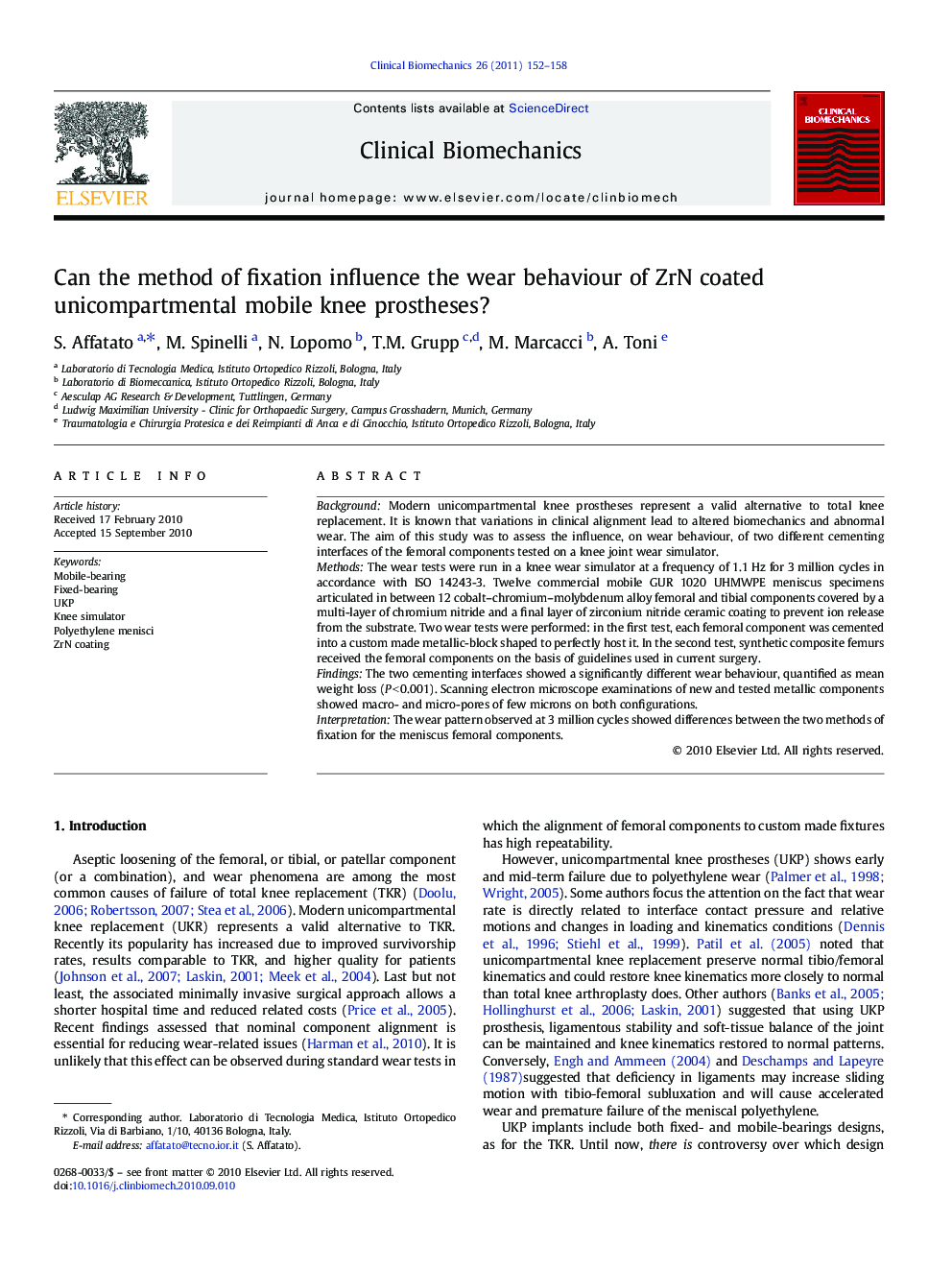| Article ID | Journal | Published Year | Pages | File Type |
|---|---|---|---|---|
| 4050865 | Clinical Biomechanics | 2011 | 7 Pages |
BackgroundModern unicompartmental knee prostheses represent a valid alternative to total knee replacement. It is known that variations in clinical alignment lead to altered biomechanics and abnormal wear. The aim of this study was to assess the influence, on wear behaviour, of two different cementing interfaces of the femoral components tested on a knee joint wear simulator.MethodsThe wear tests were run in a knee wear simulator at a frequency of 1.1 Hz for 3 million cycles in accordance with ISO 14243-3. Twelve commercial mobile GUR 1020 UHMWPE meniscus specimens articulated in between 12 cobalt–chromium–molybdenum alloy femoral and tibial components covered by a multi-layer of chromium nitride and a final layer of zirconium nitride ceramic coating to prevent ion release from the substrate. Two wear tests were performed: in the first test, each femoral component was cemented into a custom made metallic-block shaped to perfectly host it. In the second test, synthetic composite femurs received the femoral components on the basis of guidelines used in current surgery.FindingsThe two cementing interfaces showed a significantly different wear behaviour, quantified as mean weight loss (P < 0.001). Scanning electron microscope examinations of new and tested metallic components showed macro- and micro-pores of few microns on both configurations.InterpretationThe wear pattern observed at 3 million cycles showed differences between the two methods of fixation for the meniscus femoral components.
